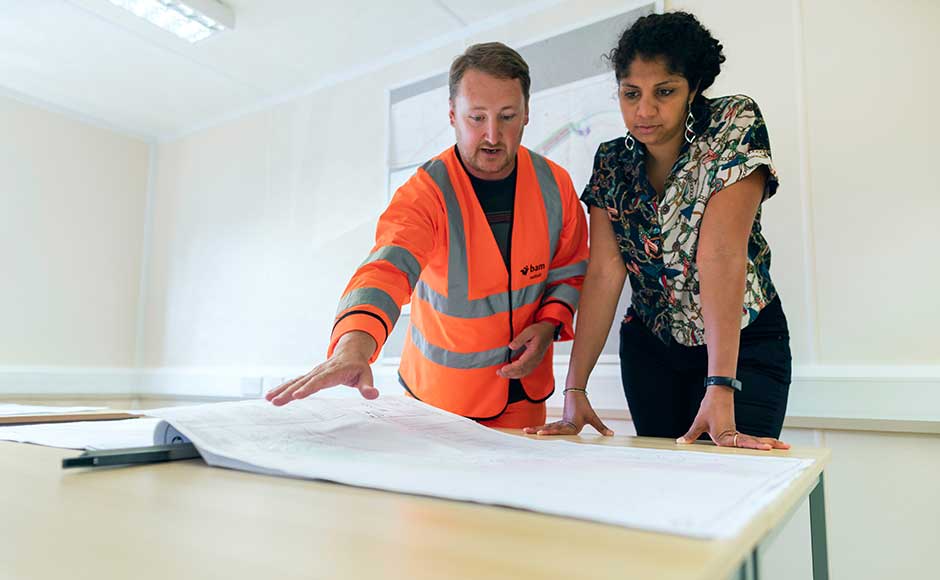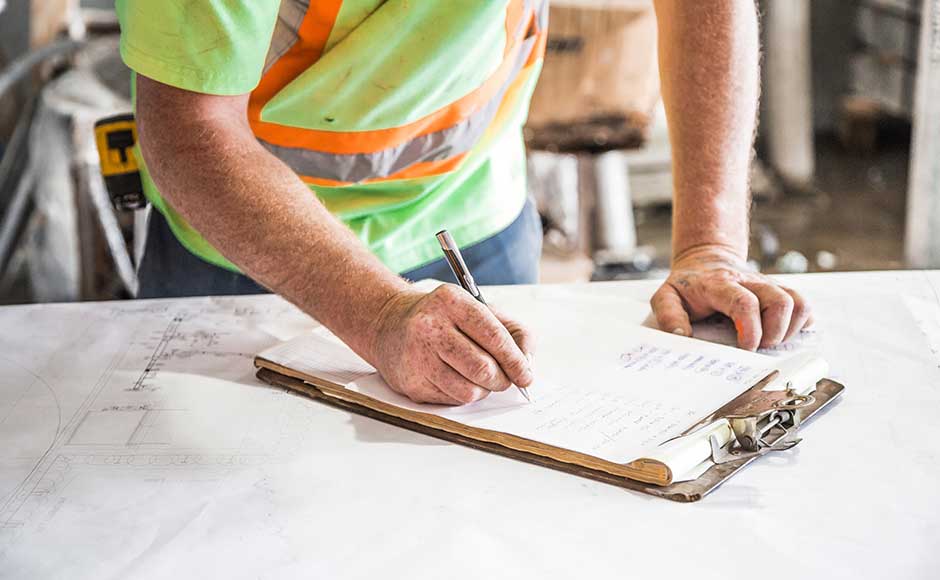Construction Design and Management (CDM) Regulations 2015

When undertaking a renovation or building project, the main requirement for duty holders (in this case, the Charity Trustees of the congregation) is to understand their responsibilities for complying and gaining an understanding of the Construction Design and Management Regulations 2015, also known as CDM Regulations or CDM 2015.
The CDM Regulations 2015, which came into force on 6 April 2015, govern the way construction projects of all sizes and types are planned in the UK. They replace the Construction (Design and Management) Regulations of 2007.
Before embarking on a renovation project, alteration or any building work the duty holder "client" has obligations that must be fulfilled under these regulations to ensure that all parties involved understand the responsibility and liability for health and safety of the planned project.
CDM 2015 is the latest update to the regulations that aim to improve the overall health, safety and welfare of those working in construction or projects. These regulations offer a very broad definition of what construction works are, and everyone involved in a project, including home maintenance and improvement works, has responsibility for health and safety.
CDM duty holders
For projects involving more than one contractor, the CDM Regulations identify six duty holders who play a part in ensuring safety.
The Client – for whom the project is being carried out. The client has the entire health and safety responsibility at the tendering stage of the project.
The Principal Designer – who plans and co-ordinates health and safety in the pre-construction phase of the project. The Principal designer has health and safety responsibility throughout the pre-construction phase.
Designers – who work under the control of the principal designer
The Principal Contractor – who plans and co-ordinates health and safety during the construction phase of the project. The principal contractor has health and safety responsibility throughout the construction phase of the project.
Contractors – who work under the control of the principal contractor and may be referred to as Sub-contractors
Workers – who undertake the construction work.
The regulations also require the preparation of a construction phase plan for all construction work and a health and safety file for the finished structure if the construction work involved more than one contractor organisation.
Client responsibility
The principal implication of CDM 2015 is that the duty holder for whom the construction services are carried out, the client, is accountable for health, safety and welfare facilities on the project. The client’s responsibilities are:
- To employ suitably competent contractors and designers
- Provide pre-construction information to the other duty holders
- Ensure a construction phase plan for the project is prepared by the principal contractor before work commences
- Ensure suitable welfare facilities are available during the construction phase (see Planning the Works section)
- Notify HSE of notifiable projects (see Notification section)
Construction (Design and Management)
Monitoring the work
The duty holder (client) is responsible for ensuring that the contractor complies with the safe working practices. The arrangements made by the contractor should include:
- Having a sign in-and-out procedure for workers
- Carrying out site induction training for their workers
- Providing a named works supervisor on site
- Controlling high-risk activities with a relevant permit-to-work system.
The duty holder (client) should also review the risk assessments and agreed method statements prior to commencement of the work. If the agreed safe working practices are not being followed or are being altered by staff or working conditions, the client can have the work activity stopped so that the issue can be addressed appropriately.
Notification
A notifiable project is one where the construction or works phase is planned to:
- Last over 30 days and involve more than 20 workers at any one time OR
- Involve more than 500 worker days
If the project falls into one or both of these categories then the duty holder (client) is responsible for notifying the HSE of the information listed below:
- The address of the site
- Brief description of the project and construction work involved
- Contact details of the client
- Contact details of the principal designer
- Contact details of the principal contractor
- Planned date for the start of work and planned duration
- Time allowed for planning and preparation for the works
- Estimated maximum number of people at work on the site.
Planning the work(s)
Information must be exchanged between the duty holders (client) and the contractor.
The client has a duty to tell the contractor about the hazards and risks already in the workplace, and the contractor should make the client aware of the hazards and risks which may be created during the works. This exchange of information will ensure that the work can be suitably planned to incorporate all the identified hazards and risks by both parties to ensure that everyone is kept safe.
The contractor must carry out their own risk assessments on the work involved and develop safe working methods to control identified risks. This must be documented and is often referred to as the Method Statement.
The duty holder (client) should examine the risk assessments and method statements before the work begins, to ensure that there are no obvious errors or the creation of unacceptable hazards or risks to their own employees or other workplace activities which may be impacted. This also allows for any identified problems to be reviewed and necessary alterations made, so there is no impact to the work schedule after the works have already started.
The client should also discuss the welfare facilities for contractor staff. Sufficient toilet and hygiene facilities, somewhere for the staff to rest and eat, and fresh drinking water should be made available as a minimum. If the current welfare facilities on the existing site are not sufficient to serve all the current workers and contractors, then portable facilities should be added temporarily for the additional workforce. Concise requirements and guidance on welfare provision under the Workplace Health, Safety and Welfare Regulations 1992 can be accessed on the HSE website.
The client and the contractor must agree and co-ordinate their work carefully as there may be several contractors and staff working on the site at the same time, creating new hazards to the combined workforce. The activities of contractor(s) must not cause a hazard for others in the shared area. For example, if contractor(s) are working at height it would be sensible to ensure no one was working beneath them in that area.
Principal Contractor
The principal contractor should ensure that:
- The construction phase of the project is adequately planned, managed, monitored and suitably co-ordinated
- The client is aware of his duties under the CDM 2015 Regulations
- A construction phase plan for the project exists and is kept up to date
- Workers have access to suitable welfare facilities
- All contractors receive site-specific induction and training
- They provide appropriate information, instruction and supervision of workers
- They plan, manage and monitor their own work to control safety risks
- Workers are consulted on site health and safety issues.
Principal Designer
If more than one contractor is involved in the project, then a Principal Designer must be appointed as they will plan, manage and co-ordinate the health and safety during the pre-construction stage. (Note that reference to more than one contractor refers to more than one contractor organisation, not more than one individual worker.)
The principal designer facilitates proper communication, co-operation and co-ordination between all the contractors involved in the project. The co-ordinated design should eliminate or minimise any risks created by the planned project work in advance of the work commencing.
Health and Safety file
The principal designer will also compile the Health and Safety file with all the information the client needs to know about the new or modified structure.
This will be passed to the client on completion of the project. The client must then keep the file up to date and make it available to workers that may need to review its contents for any future planned works.
Typical contents would include:
- Description of the work
- Residual hazards
- Key structural principles
- Any hazardous materials used
- Information relevant to dismantling and removal
- Information on specialist cleaning or maintenance of equipment
- Nature locations and markings of significant utilities and services
- Drawings of the structure and information about new plant and equipment.
Relevant legislation
The CDM regulations 2015 now apply to all clients (the duty holder for whom the works are being undertaken).
The courts will use the Health and Safety at Work Act 1974 to hold both the client and the contractors to account if contract work goes wrong and health and safety standards are compromised.
The responsibility for ensuring health and safety is therefore shared between the client and the contractor. The CDM Regulation 2015 enforces that it is in both parties’ interest to ensure that each does everything that might be considered as reasonable in the circumstances to avoid criminal liability.
Selecting contractors
It is good practice for the duty holder(s) of the congregation(s) to select a contractor on the basis of their health and safety competence. To help with this decision you should ask to see evidence of records such as:

- The company’s Health and Safety Policy
- Staff training and competency records and/or specialist certification
- Examples of Risk Assessments and method statements
- Previous or current Client references
- Accident records and RIDDOR reportable accident rates etc.
- Any enforcement action taken by authorities
- Maintenance of machinery and plant equipment
- Proof of adequate insurance
- Membership of professional organisation or certified body.
Where more than one contractor is involved the client must appoint a principal designer and principal contractor and they will need to produce a health and safety file.
Workers and employees
All workers and employees at the project site should follow the site health and safety guidelines and take reasonable care of their own health and safety and that of others whom their work might affect.
Workers and employees should report anything that could affect their own or others’ health and safety to senior management immediately.